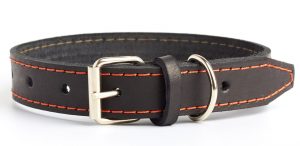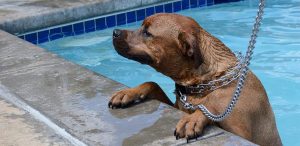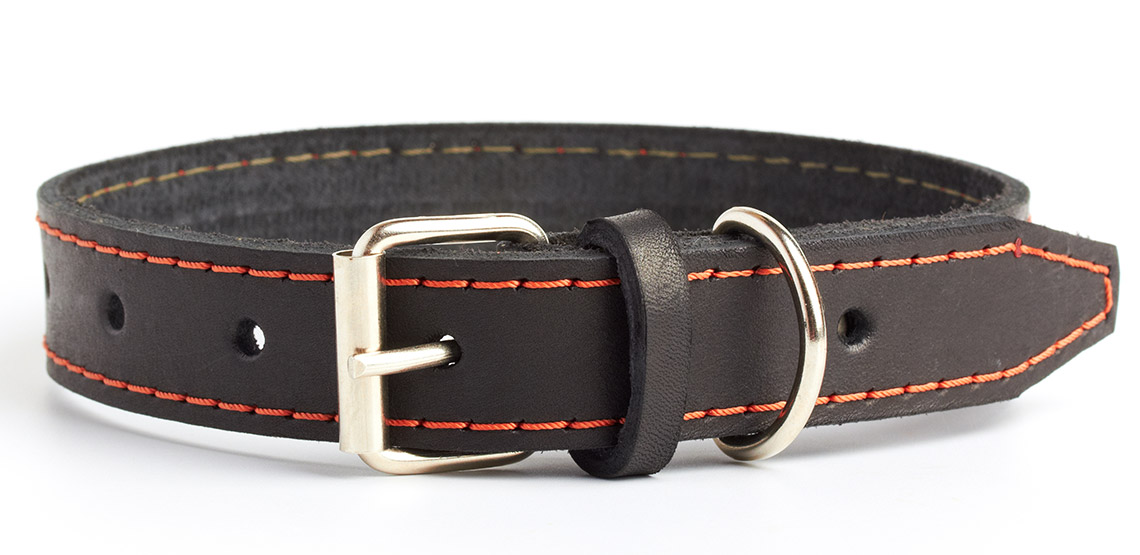
More Important Than You Think
Dog collars are more than something to simply wear. They are also used for walking, training, holding valuable forms of identification, and, for some, to show off a fashionable flair. However, not all collars are made alike. You may find yourself in the collar and leash aisle of your local pet store with far more options than you anticipated.
So, which collar is the right one for your pet? Does it really matter? What benefits will one type have over another? Here’s a list to help you along with your decision!
Rolled or Flat Collars
Flat collars are the go-to for most pet owners. They come in a variety of colors, patterns, and fancy styles, which allows owners to easily express their pet’s sense of fashion. You will find these collars with either buckles or quick release clasps, with many preferring to use the buckle variety for strong dogs. Rolled collars work much the same way, however, the style allows for less surface area to rub against the dog’s skin and fur.
Another ‘plus’ for these collars is that they often come with a D-ring to hold your dog’s ID tag, license, and rabies tag. These tags are crucial for assisting with finding your dog if they ever became lost.

Chain Slip Collars
Chain slip, or choke chain collars, are not suggested for everyday use. These collars should be used for training purposes only. Corrections, when conducted properly, are to provide a quick tightening around the neck from the tug of the leash.
While these collars may help with teaching your dog how to properly walk on the leash, most professional trainers have steered away from their use. Choke chains are generally not recommended, as they can easily damage your dog’s neck if not used properly. They can also prove to be a strangulation hazard for your dog, so do not leave them unattended when wearing one.
You will definitely want to stay away from this type of collar if you have a dog that has more bulging eyes, smaller or shorter throats, and/or those with short noses. Pug parents, beware! This is not the collar you’re looking for.

Prong Collars
Although the Prong Collar looks like a torture device, some say this type of collar is safer than the use of a choke chain. The prongs are spread out in such a manner that the force of a correction is distributed more evenly, meaning less pressure on the neck because of the greater surface area.
The idea behind their use in training is similar to the chain slip variety. While they can help certain dogs lose their willingness to pull, some pet owners have found that the use of these collars has worked against them.
If you have a dog that tends to be more fearful of situations, people, or other dogs, this is not the collar for you. Often, the dog will associate all the negative feelings provided by the collar from your corrections with what they fear. If your dog is more excitable, this isn’t the collar for you either.
The pinching sensation can actually work to increase their excitement, making them act out even more. Overall, this collar is another that isn’t typically recommended.

Martingale Collars
Martingale collars are kind of like a combination between a standard, flat collar and a chain slip. They are mostly used to stop the dog from slipping out of the collar during a walk. These collars don’t tighten all the way, since there is a stopping device that prevents full closure. You can find martingale collars in many different colors and designs, but most don’t get as fancy as certain flat collars.
You’ll see these collars primarily used on Sighthounds. Because of this, you’ll often hear them dubbed “Greyhound Collars.” Their use is not limited to Sighthounds, though. Any breed could benefit from them.

Head Collars
Head collars tend to slightly resemble muzzles, but they work in a much different way. The best way to explain their use is to think of a horse and its halter. The head collar allows the pet owner to get their dog’s attention easily by leading the face. This can help speed up training, as they are phenomenal for teaching dogs how to walk properly without pulling.
If the dog does pull, the leash tugs the face lead and causes the dog’s head to turn. Since dog’s won’t like this, these collars tend to help curb negative behavior.
Dog’s can get themselves out of these collars if left unattended, so they aren’t recommended for long term wear. Another downside is that some dogs really don’t like the way the head collar feels on their muzzle. This can be frustrating, but training your dog to enjoy using the head collar is often not too tricky or time consuming.

Harnesses
Harnesses are often an option pet owners choose if their dog tends to pull. The idea is that the harness allows for the pressure to be spread more evenly along the body, opposed to only on the neck. There is a bit of debate as to whether harnesses actually help or hinder when trying to prevent pulling. The trick is using the right harness.
In most instances, you will want to avoid a harness that has a leash attachment on the dog’s back. While you may think this would be more comfortable, this will be what promotes more pulling. These harnesses are best left for dogs that are pulling sleds or carts. Pugs, with their short muzzles, and Miniature Poodles, with their propensity for tracheal collapse, are breeds that harnesses are highly recommended for.

Smart Collars
A newer style making waves in the pet world is the smart collar. Smart collars come with a list of bells and whistles, some with GPS so you can locate your dog anywhere, some that monitor their behavior throughout the day, and some that help with training. Some smart collars even track overall activity and the health of your dog. Most link up with apps on your smartphone and are user friendly.
These collars can be used with any breed, and are beneficial for pet owners who want to be more connected with their furry friend. There are quite a few on the market now, so, if the smart collar interests you, it’s best to be sure you get one that has all the features you want.
Collars are essential tools for training dogs. They also serve as a fun way to change up how your dog looks. You may find that you like having a few different collars for different intentions. No matter which you choose, it’s best to know how and why they work so that they can work for you!
